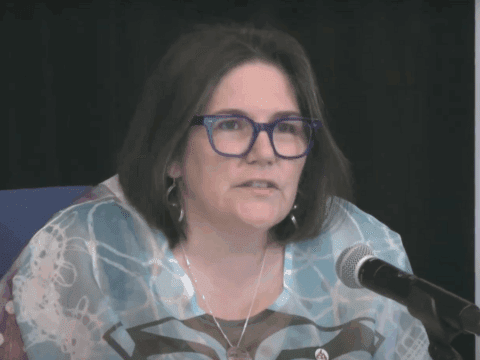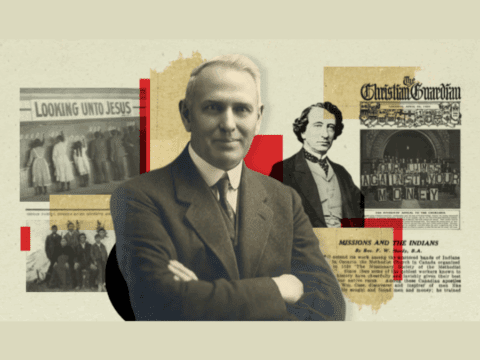Will Grizzly Bear Spirit leave B.C.’s Purcell Mountains if a massive ski resort moves in? The Ktunaxa people say it will. They argued to our nation’s highest court that building the alpine playground on land they call Qat’muk will force Grizzly Bear Spirit out, infringing on their right to religious freedom.
The Supreme Court of Canada ruled against the First Nation in November (see “Sacred land claim denied,” on page 42 of the print edition). “The charter protects the freedom to worship, but does not protect the spiritual focal point of worship,” the judgment states. The case raises intriguing questions about how we define religion in this country. Is religion a faith system that exists only in the hearts and minds of believers? Or can spirituality be inextricably linked to land?
Growing up, I spent a month each summer on a small island on a lake north of Parry Sound, Ont. The place had two ramshackle cottages and a few outpost buildings. A northern wind rippled the blue waters, and snapping turtles visited our dock. I climbed its trees and played fantastic games of hide-and-seek with my siblings, scrambling over the rugged rocks of the Canadian Shield.
My family sold the island in the mid-1990s. But I would often return to it in my mind. On nights when I couldn’t sleep, I’d sit at the base of my favourite climbing tree to watch the leaf-shaped shadows dance along the rocks below. My spirit would find peace.
A few summers ago, we rented a different cottage on the same lake. After a chance meeting with the island’s new owners, they invited us to visit.
Their gracious welcome stood in stark contrast to the nightmare before us. The trees on the island had been more or less clear-cut. In their place, the predilections of a hard-core partier. The work shed, previously filled with old tools and project possibilities, was stocked to the rafters with booze. Parked in the middle of the island, a tough-guy motorcycle. Most grotesque of all, spray-painted on the side of the boathouse was a giant melting skull with turquoise eyes, set against a psychedelic sunset.
That night, I couldn’t sleep. When I closed my eyes and searched for my leaf-dappled rocks, all I saw was barren land and a turquoise-eyed skull. I also felt something I’d never experienced before: a need to heal this one-acre island, to protect it, to let it grow back to its natural glory and be the thing its Creator meant it to be.
Reading reaction to the recent Supreme Court decision, I take heart in a statement made by Kathryn Teneese, council chair of the Ktunaxa Nation: “We will continue . . . to provide protection to Qat’muk, because that’s the task that was given to us by the Creator and no one else can take that away from us.”
While my experience helps me empathize with the Ktunaxa, the truth is far more complicated: our beloved island has its own colonial history. Once part of the traditional territories of the Huron-Wendat, Odawa and Anishinabek First Nations, the island later became Crown land. The government sold it to a man named Harry Burry — an Indian agent. He lived there year-round as he administered government policies designed to address the so-called Indian problem. After he died, my grandfather purchased the island.
Did the new owners destroy my sacred space? Or did we settlers chase out the island’s spirits long ago?
This story was originally published in the February 2018 issue of The Observer with the title, “Observations: Can spirituality be linked to land?”














